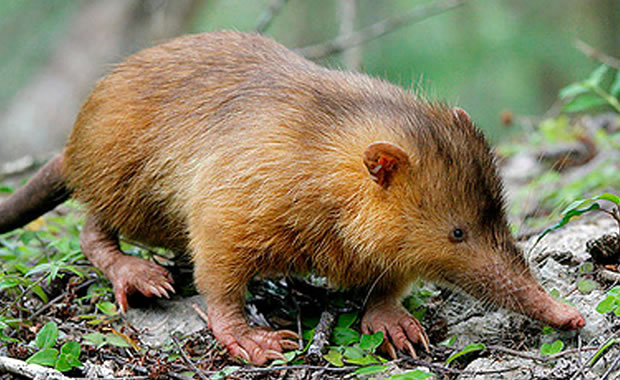

Mugger Crocodile
© Peter Dollinger |
Creature Profile
The mugger crocodile is found throughout the Indian subcontinent and the surrounding countries, including India, Pakistan, and Sri Lanka. Two subspecies are endangered: the Iranian Crocodile - C. p. palustris and the Ceylon Mugger Crocodile or Sri Lanka Swamp Crocodile - C. p. kimbula. Mugger crocodiles are medium to large crocodiles depending on the subspecies and range in size from 5.9 to 13 feet. Females have been known to grow at a faster rate than males. Both endangered subspecies are greenish-olive in color with darker markings and can reach a body length of 13 feet.
The mugger crocodile is a freshwater crocodile and can be found in lakes, rivers, and marshes where the water is slow-moving and shallow. They can also live in reservoirs, irrigation canals, and other manmade bodies of freshwater, and some subspecies have been reported thriving in saltwater lagoons. Some crocodiles have been reported to migrate long distances over land in search of more suitable habitat. Mugger crocodiles are very social and territorial. They are carnivorous and mainly feed on fish, frogs, crustaceans, birds, mammals, and other reptiles. They can also chase prey on land for short distances. Females dig nesting holes and give birth to 25 to 30 eggs, although many of them may not survive due to hunting by other animals. The surviving eggs hatch after 60 days.
The main cause of decline for the species is illegal skin trading. They are also threatened by accidental death in fishing nets, egg predation by humans and animals, and habitat destruction. The estimated population for the Iranian crocodile is 100 to 200 individuals. The Ceylon mugger crocodile can be found in Sri Lanka's lowland national park and the estimated population for Sri Lanka crocodiles is around 2000. Conservation efforts include legal protection and captive breeding and rearing programs, which have generally been successful. Mugger crocodiles also thrive in several protected areas.
Wikipedia Article

|
Wikipedia Article Copyright Notice: This article is licensed under the GNU Free Documentation License. It uses material from the Wikipedia article "Mugger crocodile". |
May 11, 2017
Glenn, C. R. 2006. "Earth's Endangered Creatures - Mugger Crocodile Facts" (Online). Accessed 4/26/2024 at http://earthsendangered.com/profile.asp?sp=92&ID=3.
Need more Mugger Crocodile facts?



